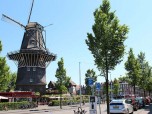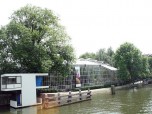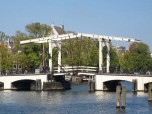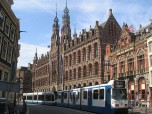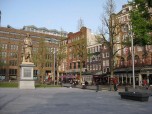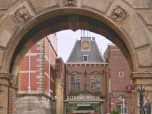Jordaan is an area of Amsterdam that is surrounded by four canals. Jordaan was once a neighborhood of blue collar workers. Today, it is one of the more elite districts in all of the Netherlands. Running through the middle of the region is Rozengracht, a former canal that was filled in and sealed over becoming the areas main street to vehicular and pedestrian traffic. Rembrandt himself once lived in a home situated on the border of Rozengracht.
The Prisengracht is Amsterdams longest canal and the Westerkerk church built between 1620 and 1631 is its areas tallest place of worship. Also on the same canal stands the Anne Frank Museum. This is the home where Anne Frank once hid from the Nazis that now stands as a memorial to her and others who have been persecuted.
History
It is believed that the Name Jordaan is of French derivation with its meaning in English being “garden.” Since the majority of the inland waterways and avenues are named after flowers and trees this would seem to make sense. Another possibility has the name coming from the River Jordan in Western Asia. The extra “a” would represent the Dutch spelling of this 150 mile river of biblical significance that leads to the Dead Sea.
Jordaan was founded in 1612 and appropriately named “The New Work.” Its streets are laid out in an unusual pattern which is explained by the fact that they were constructed following the existing pathways. During the 1800’s a total of six canals were filled in, including the aforementioned Rozengracht, to create this neighborhood. The area was taken up by many radical individuals and political rioting occurred on a relatively regular basis for over 100 years. This began in 1835 and culminated with the “Strike of February 1941.” That particular uprising was to protest activities by the Nazis against Jewish residents.
Jordaan Today
Architectural sightseeing is a favorite pastime for visitors of Jordaan today. Restored buildings and grand gardens are prevalent through the district. Many of the homes have stone tablets still intact carrying the family name or perhaps the profession of the resident. This practice was enacted at the towns inception to save room from free standing signs on the already thin roads. Most houses are now inhabited by students, young entrepreneurs or artists.
Markets are in abundance here, including the Lime market, or Lindenmarkt. Also on the weekends there is an organic food mart. Mondays brings the flea market on the north side of Jordaan and a wide selection of fabrics to the west at Westerstraat, or West Street.
The Westerkerk church is the most popular religious venue to visit and is the location of the Jordaan festival that features classical music concerts among other performances. Guided tours of the area are available during the week, but not on Sundays. Filling up your itinerary for a trip to Jordaan is made easy by the bounty of small museums and art galleries that are present all around the vicinity.






